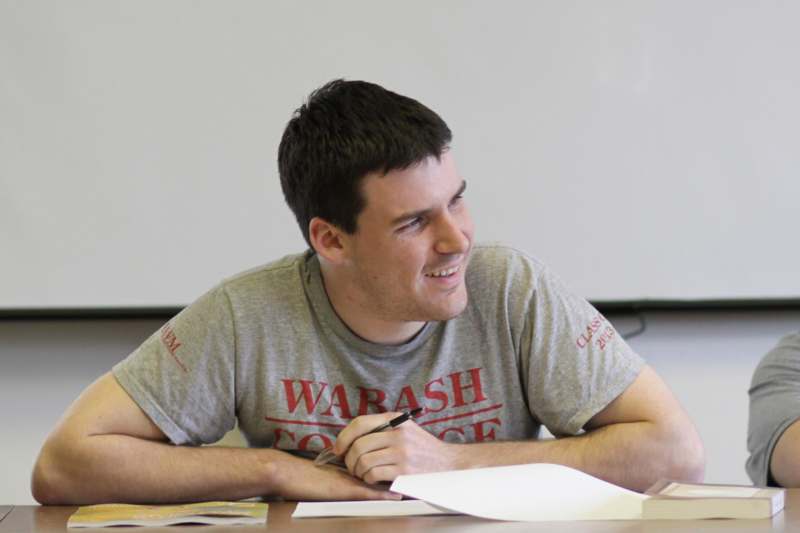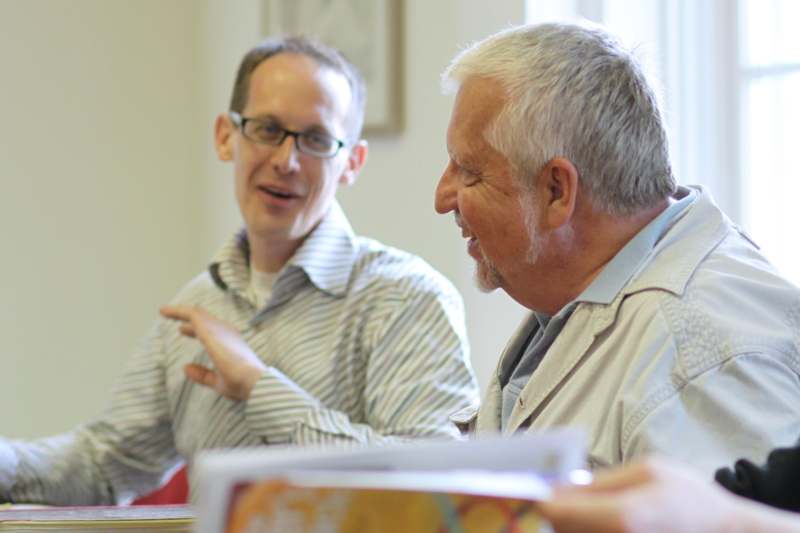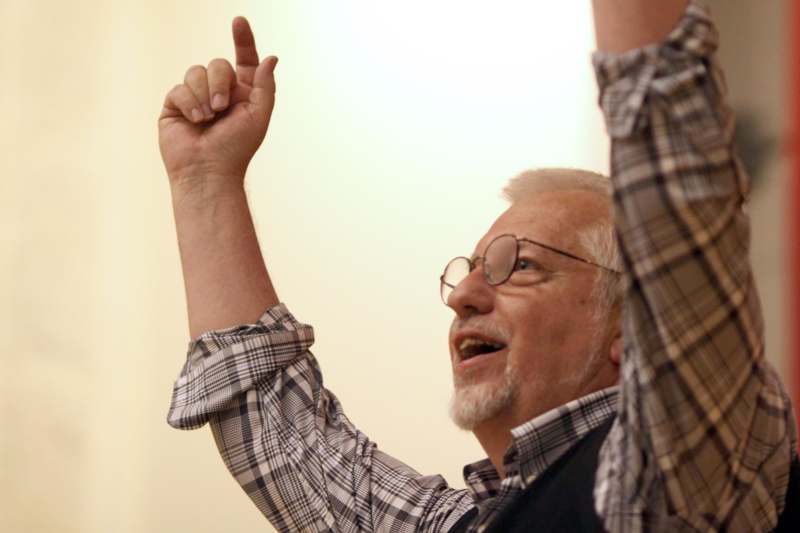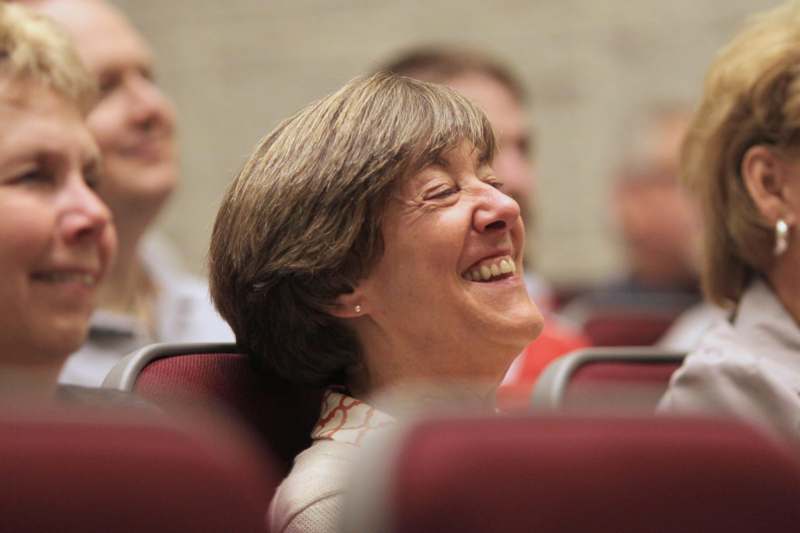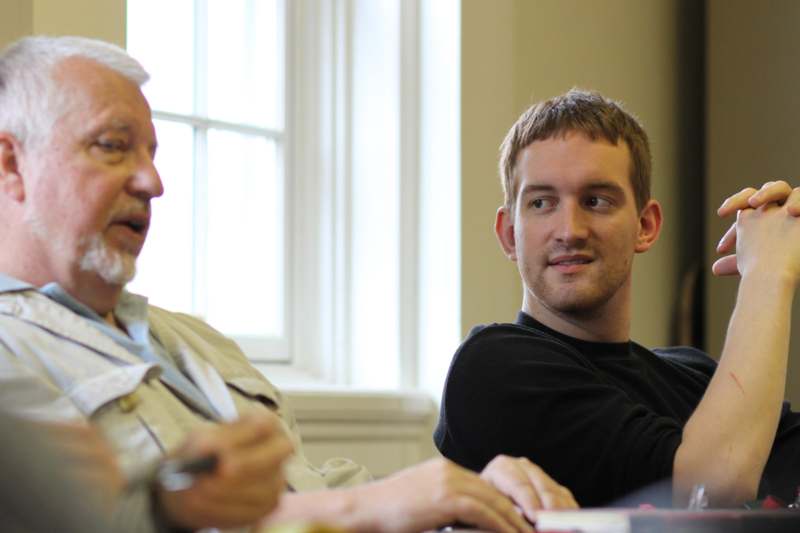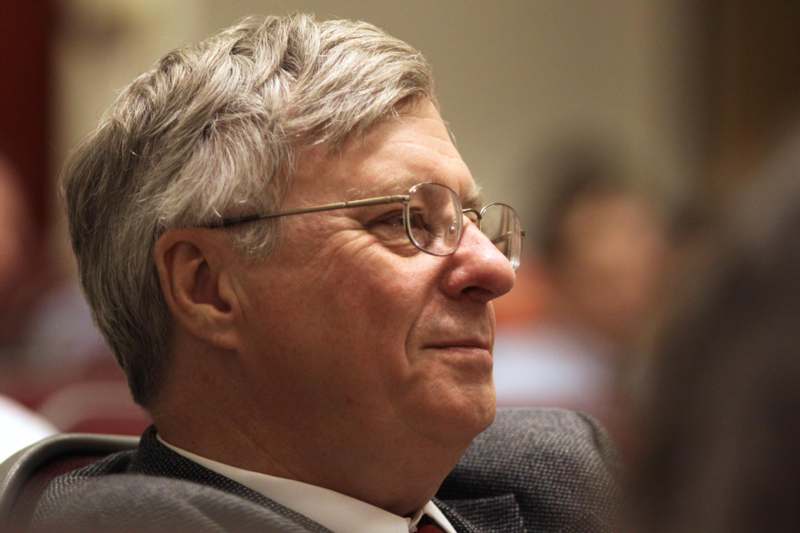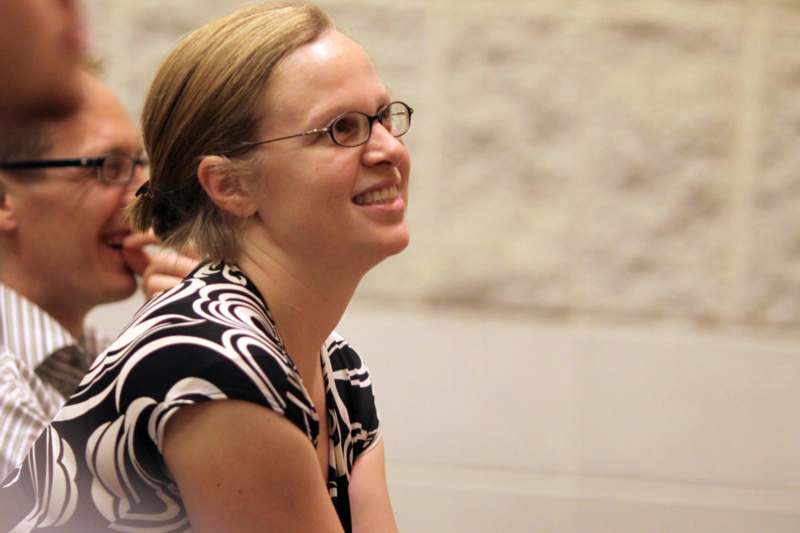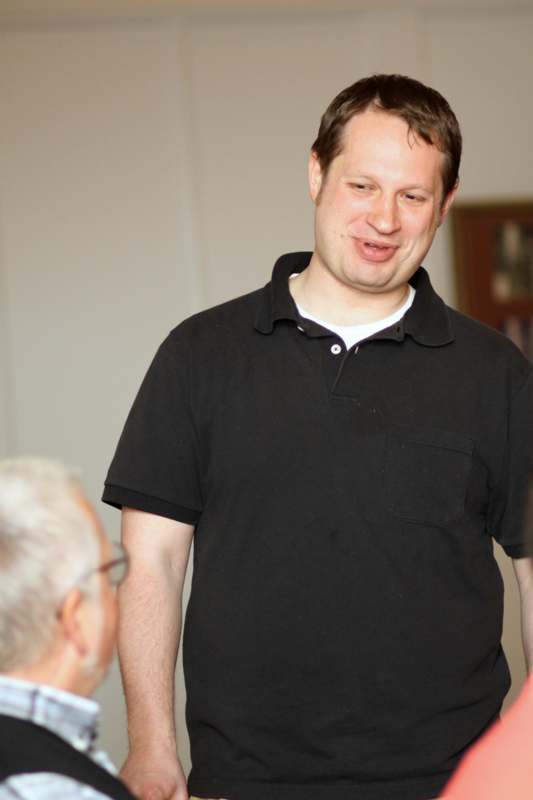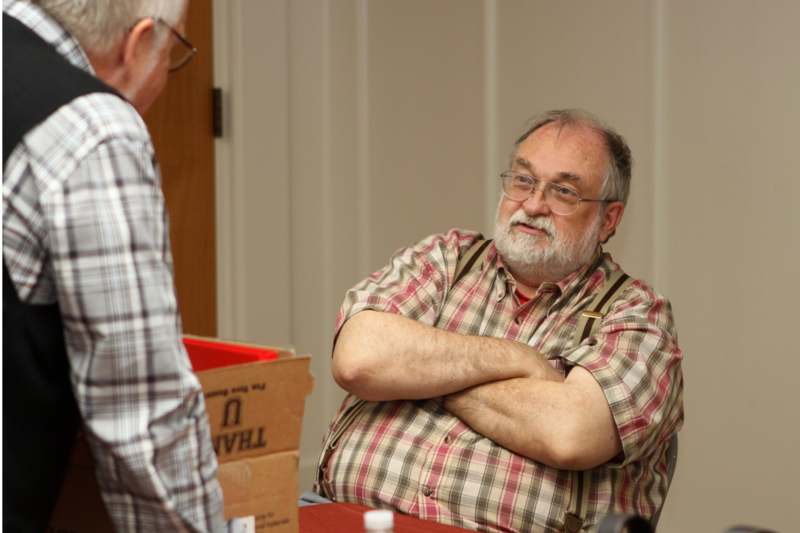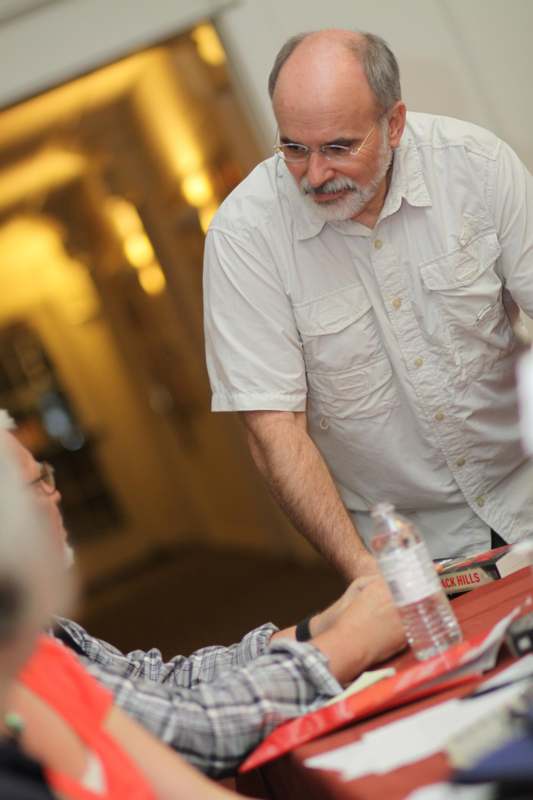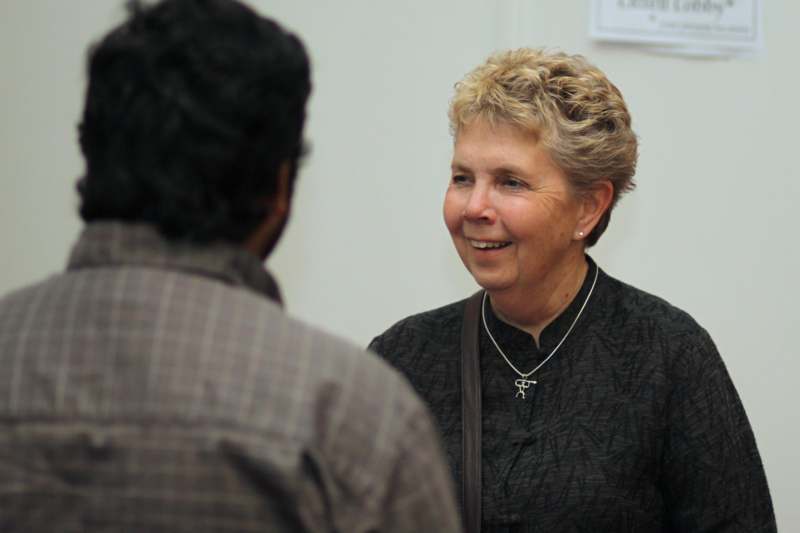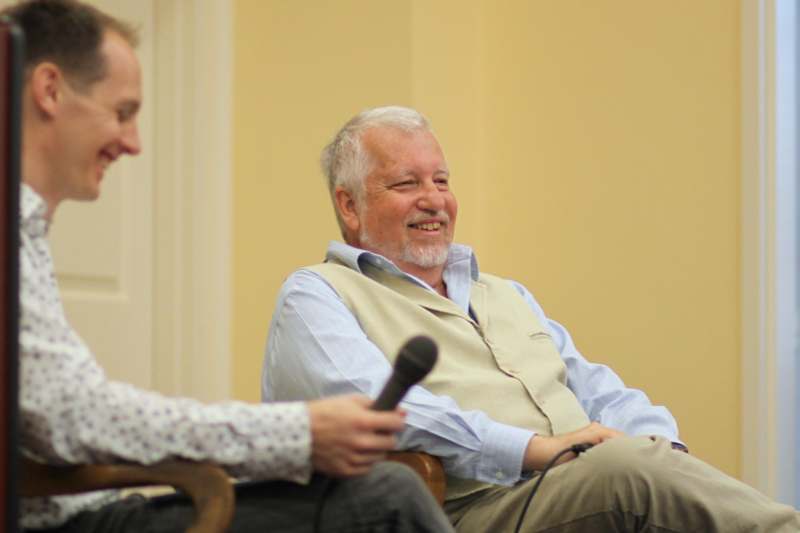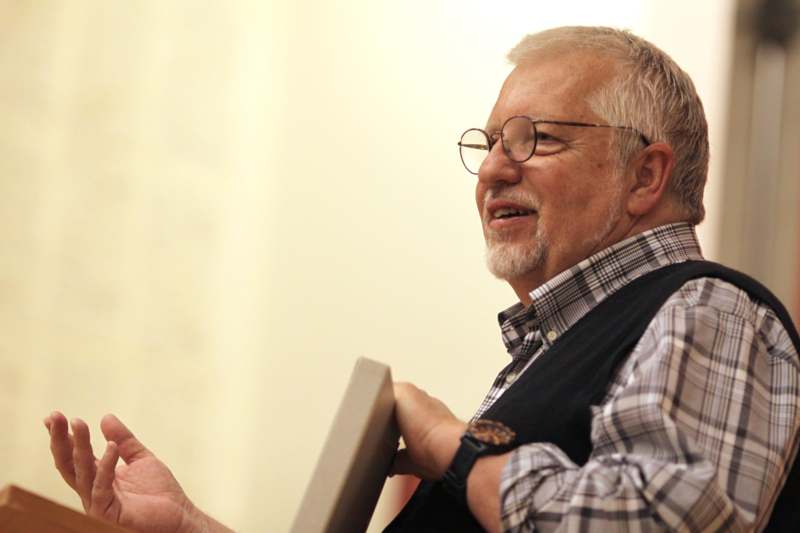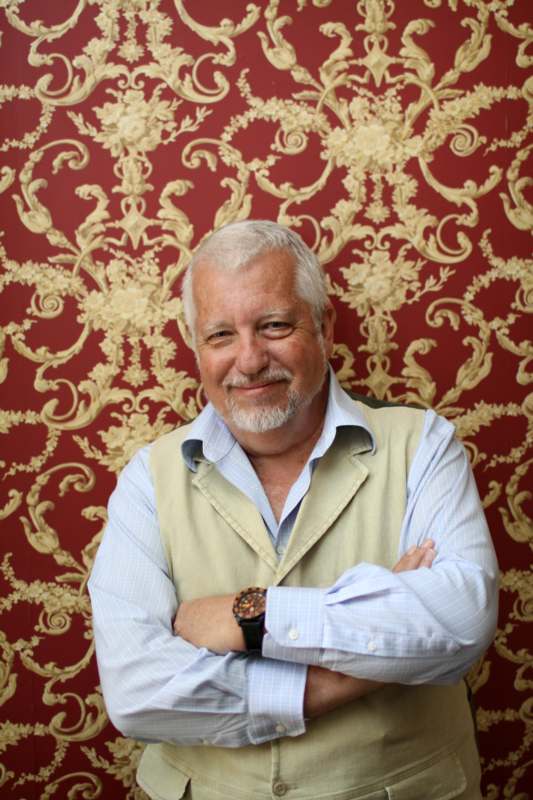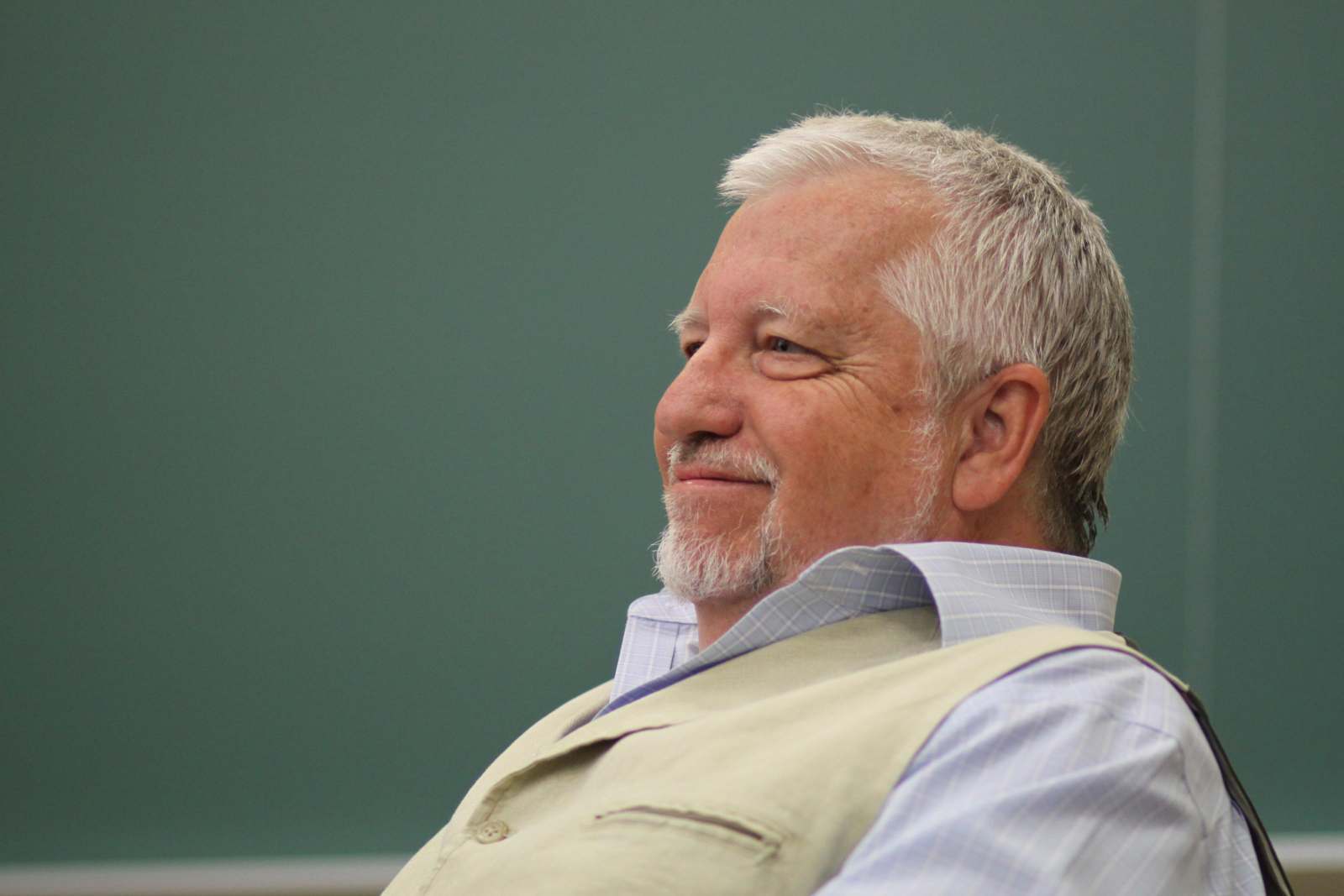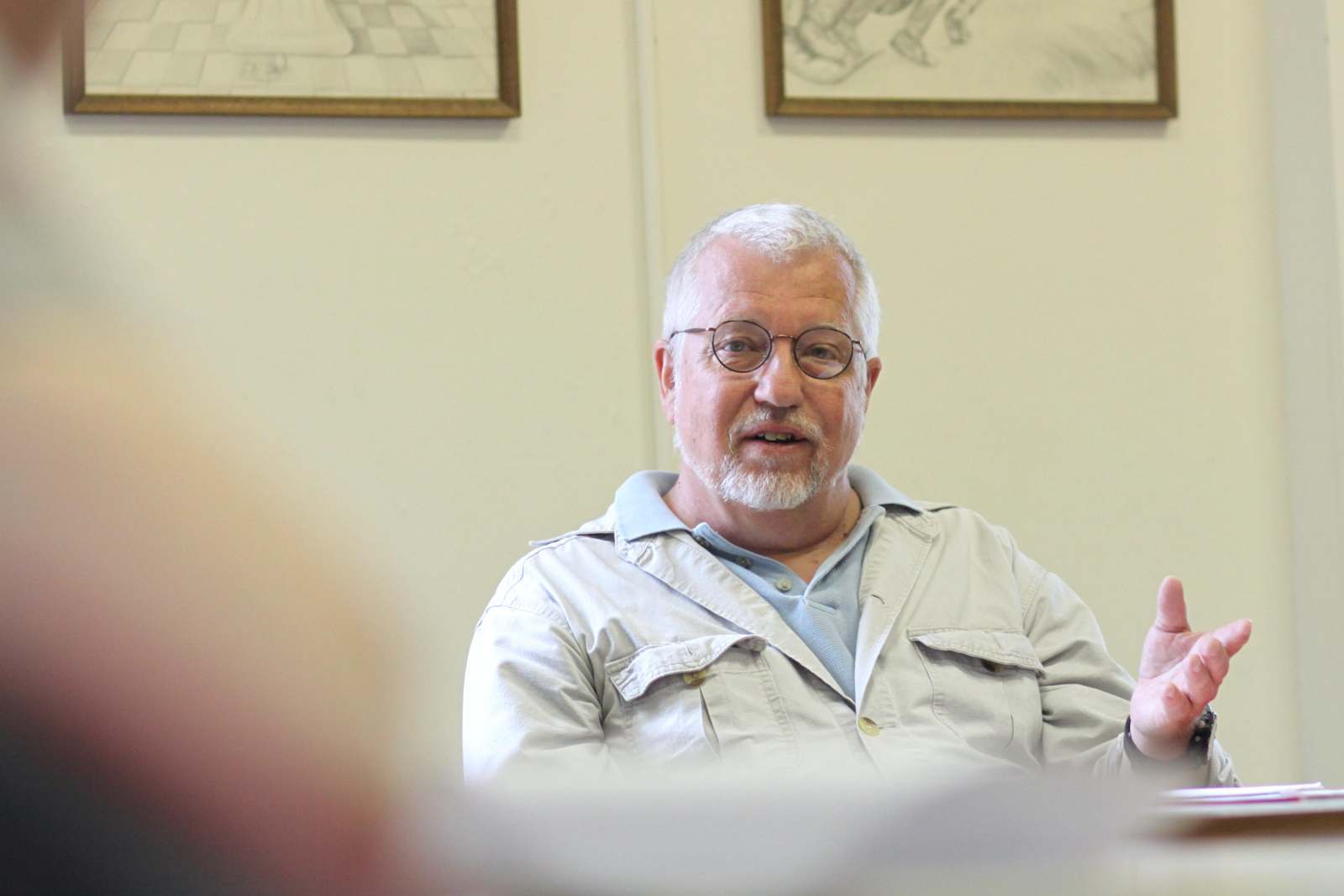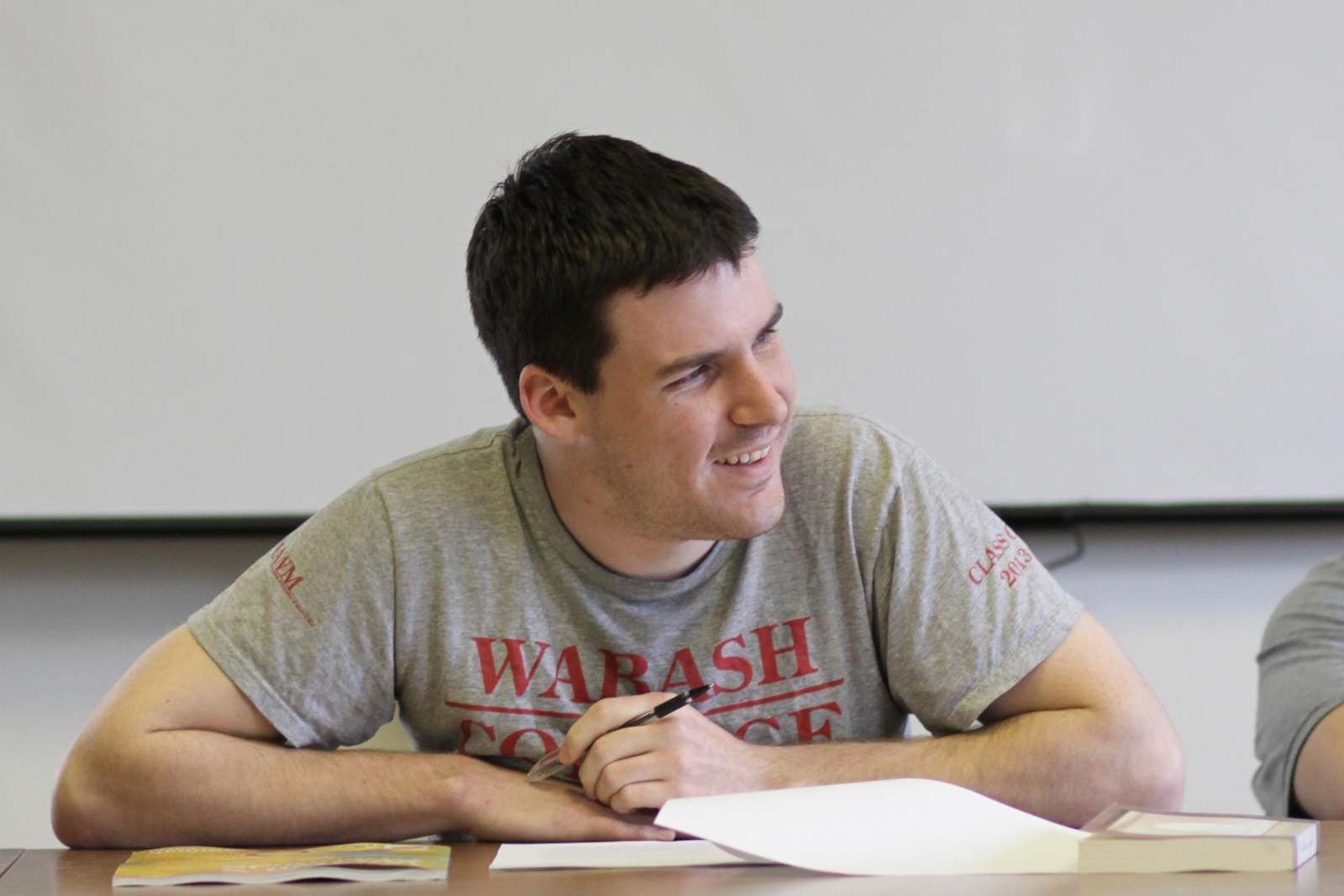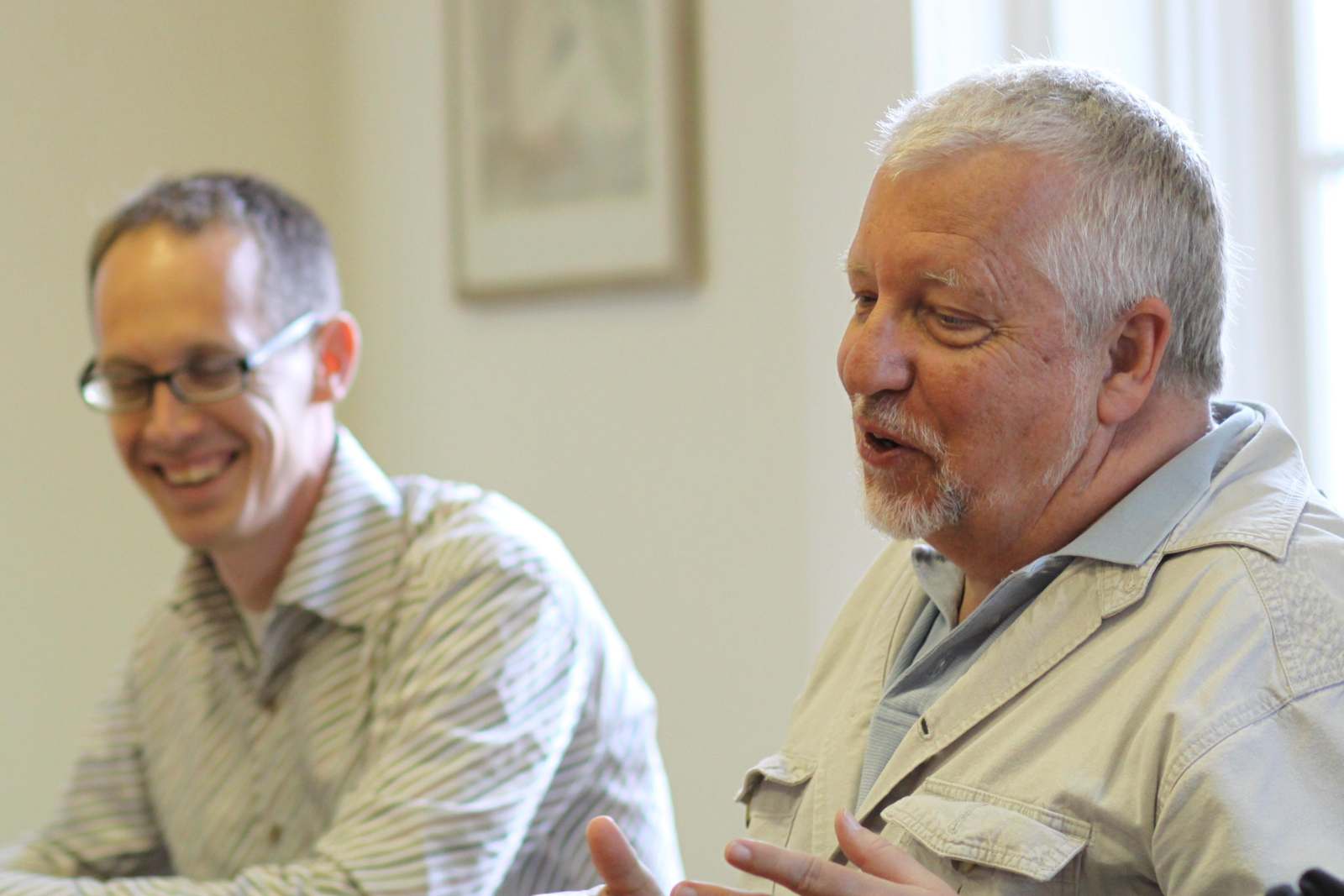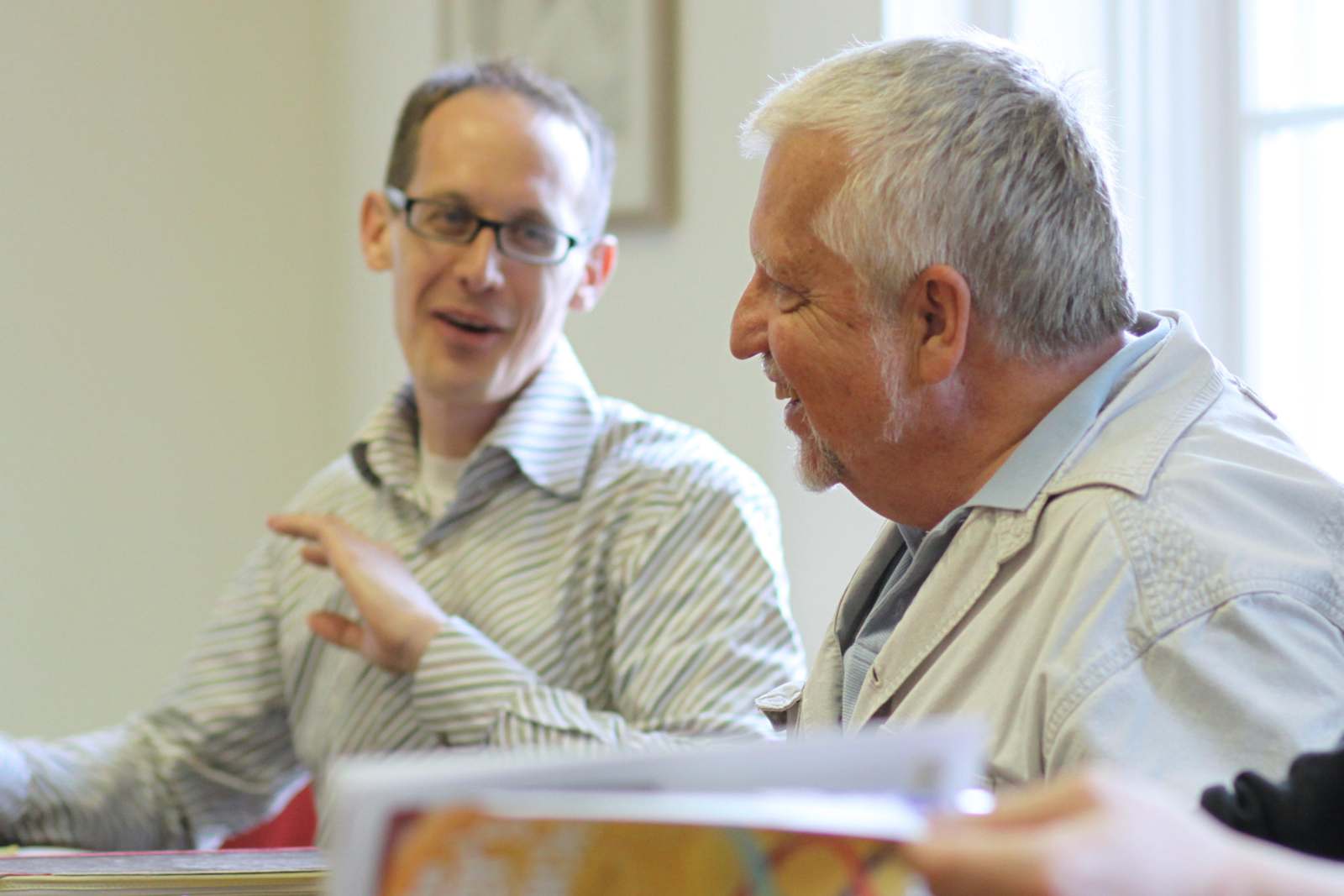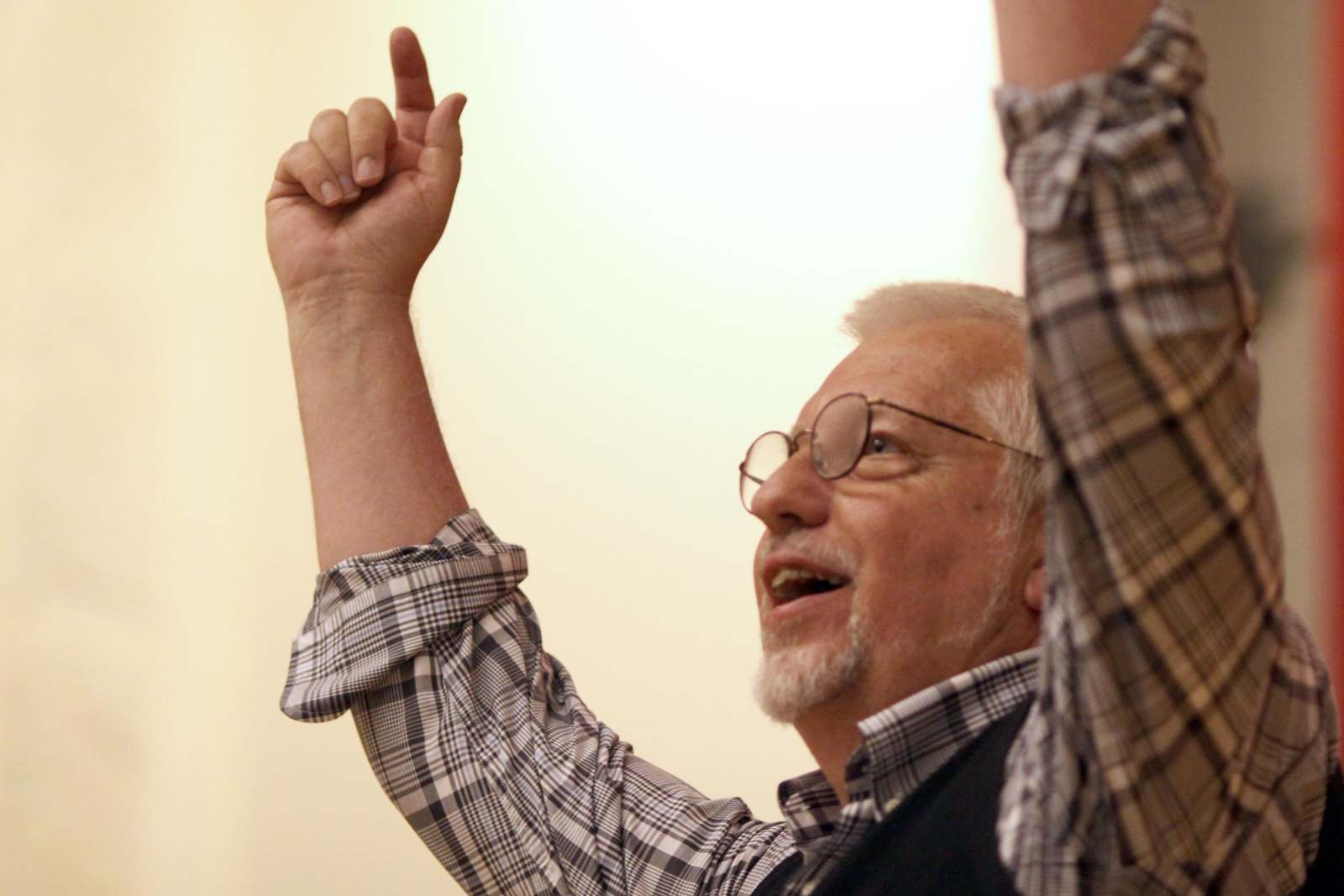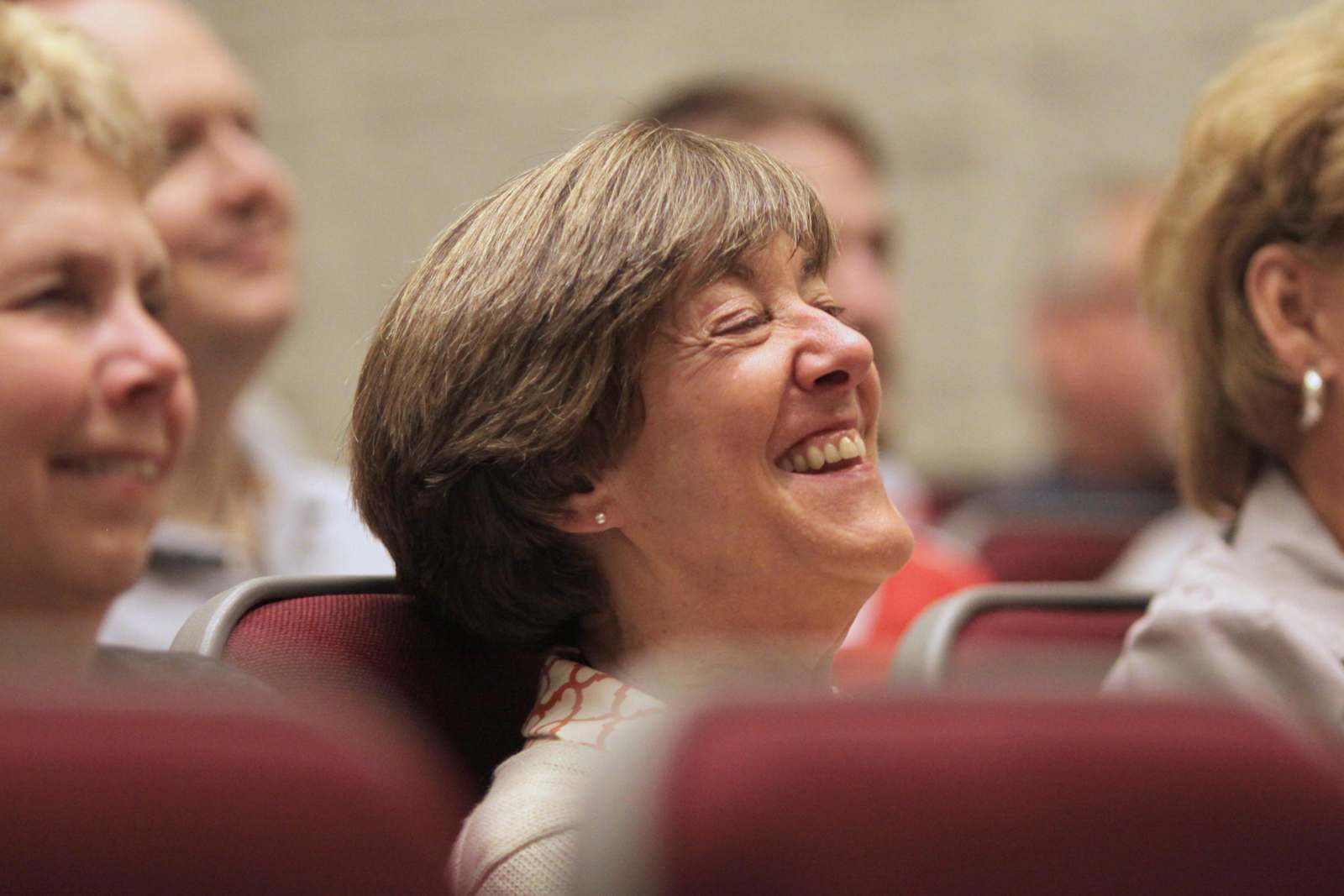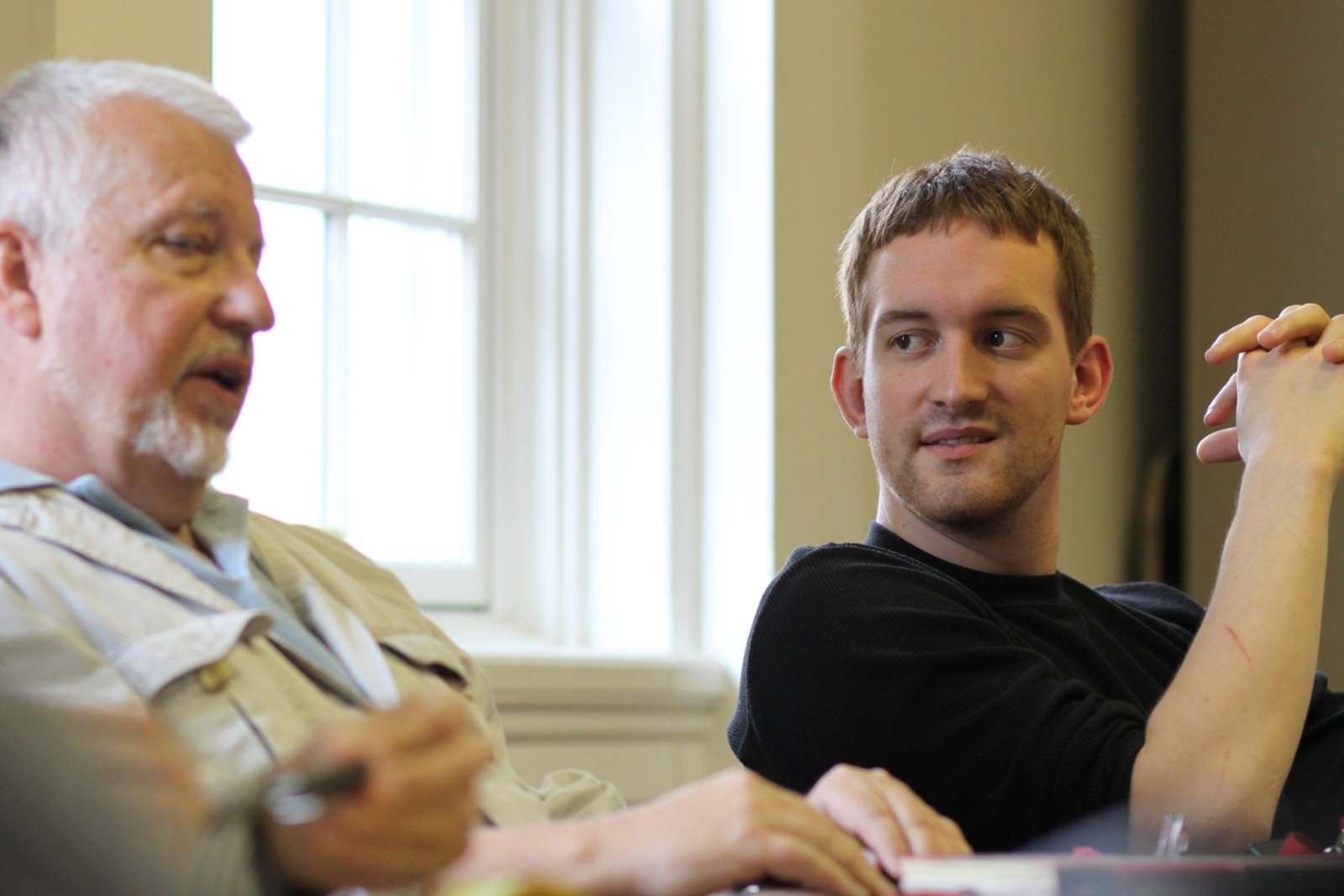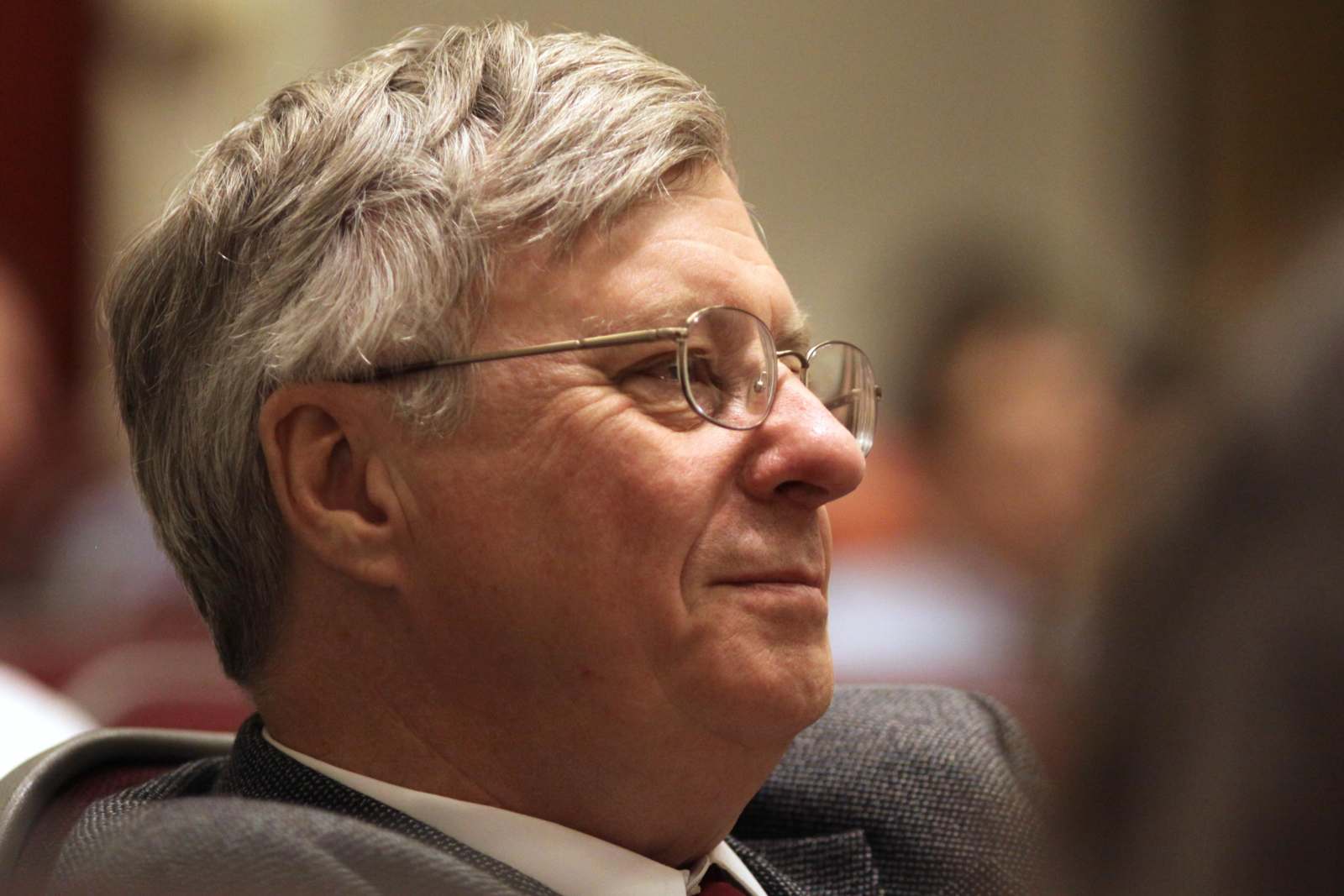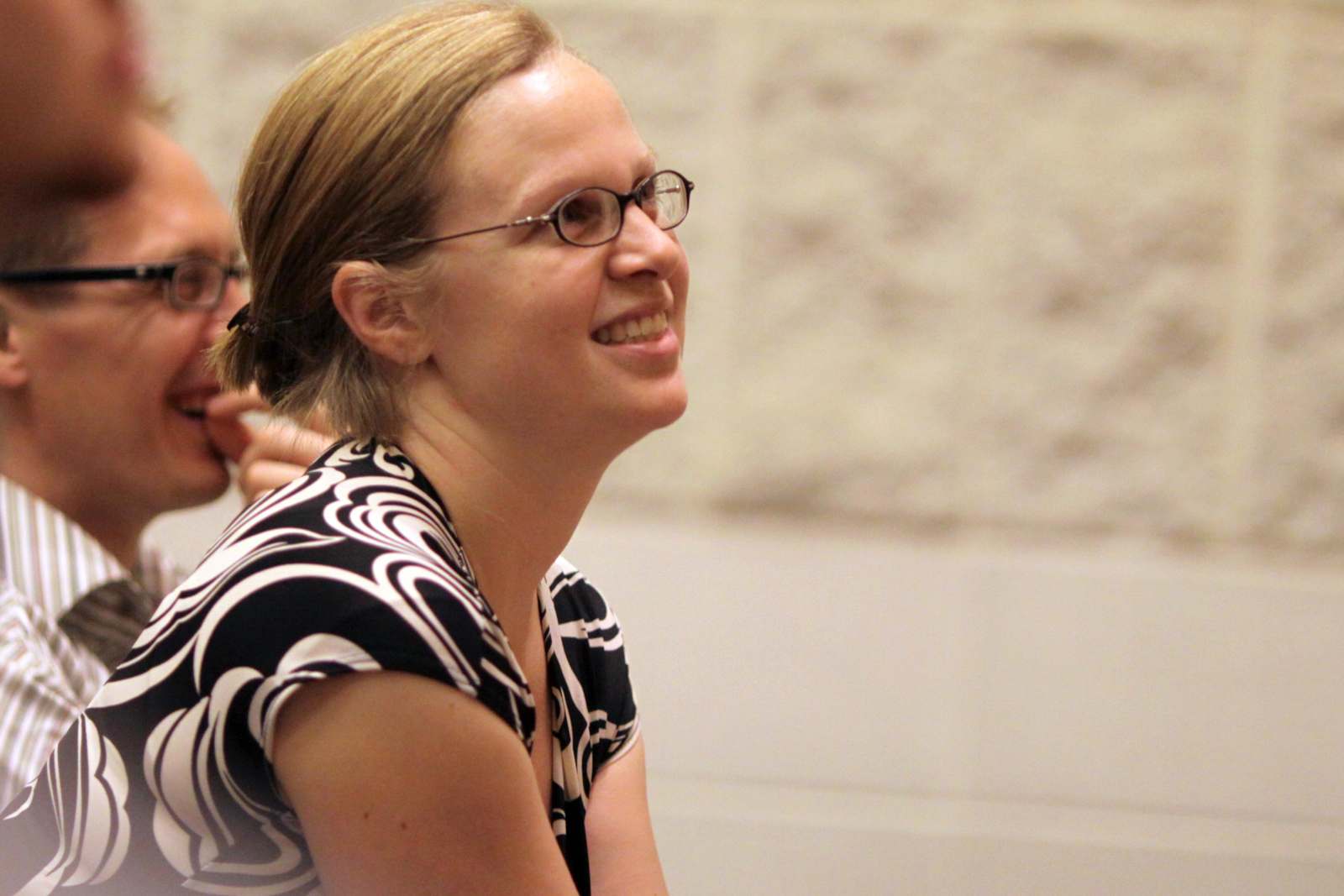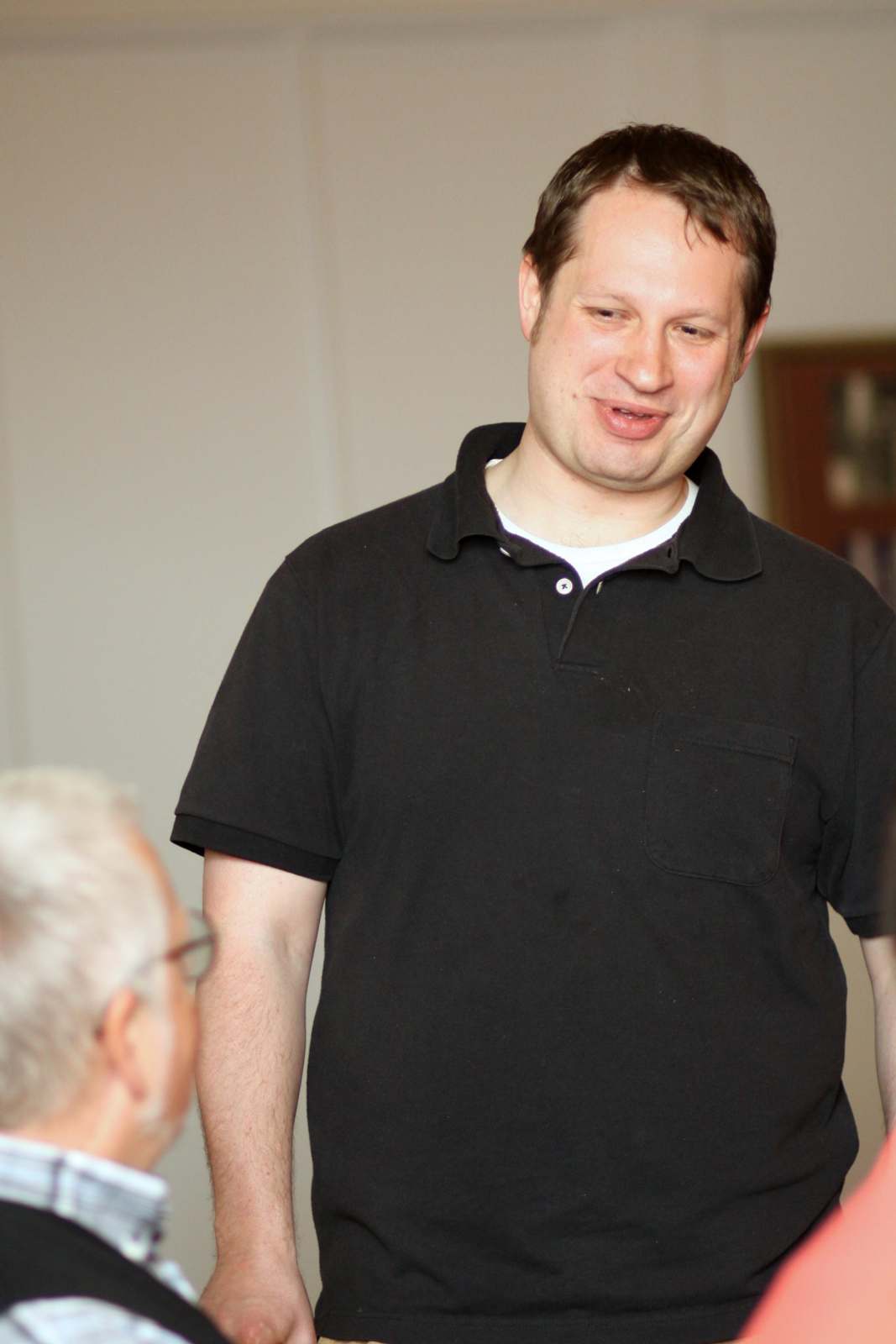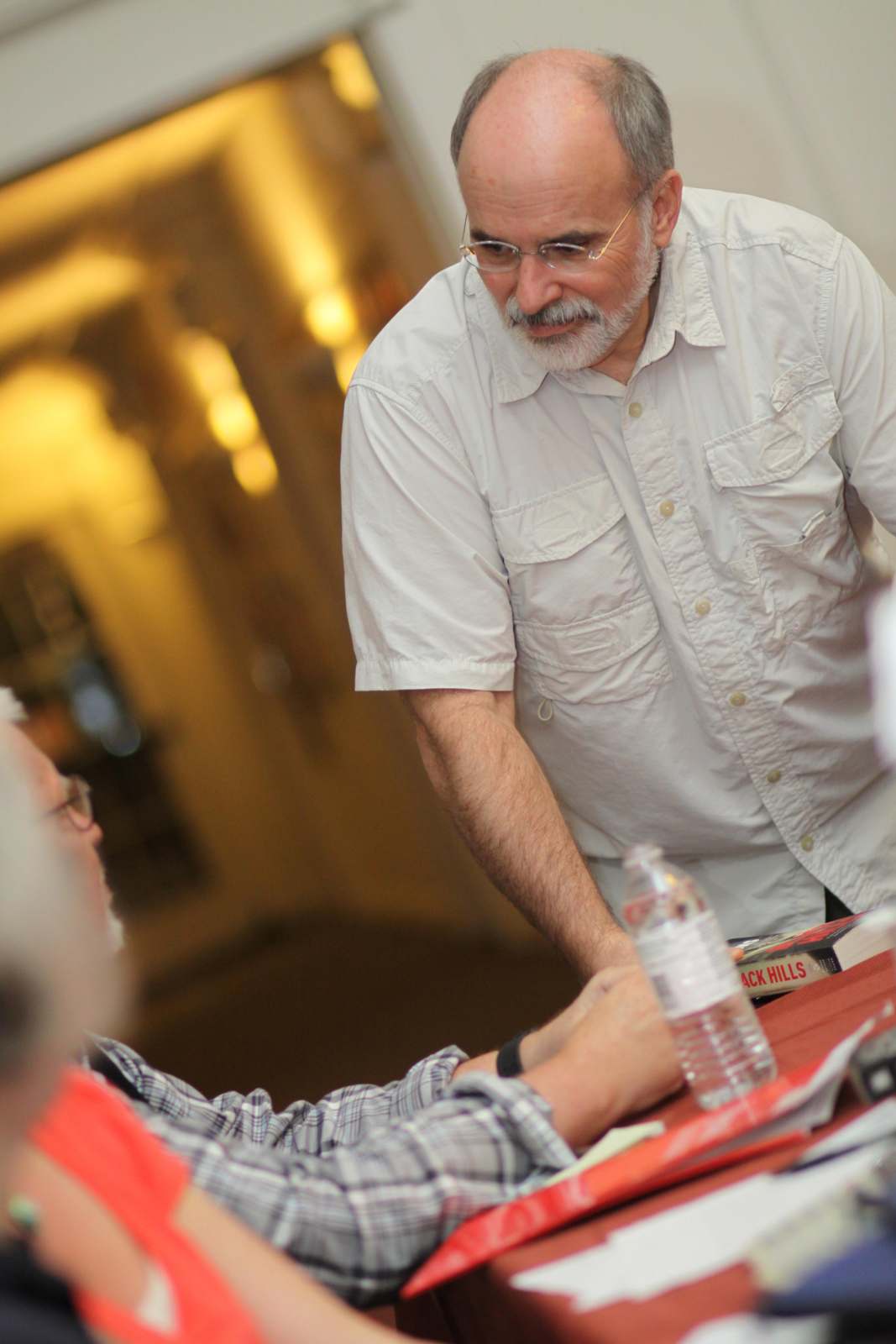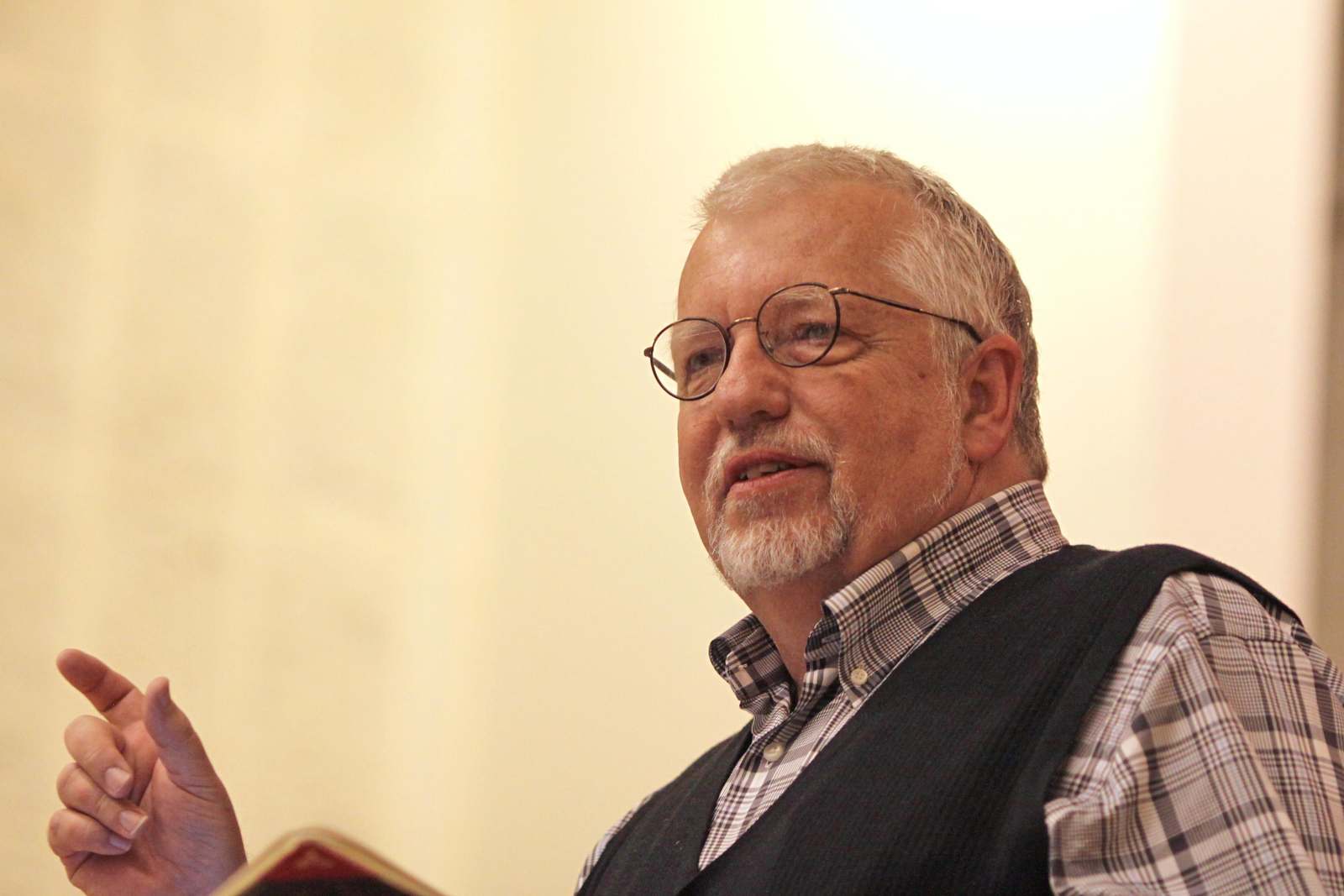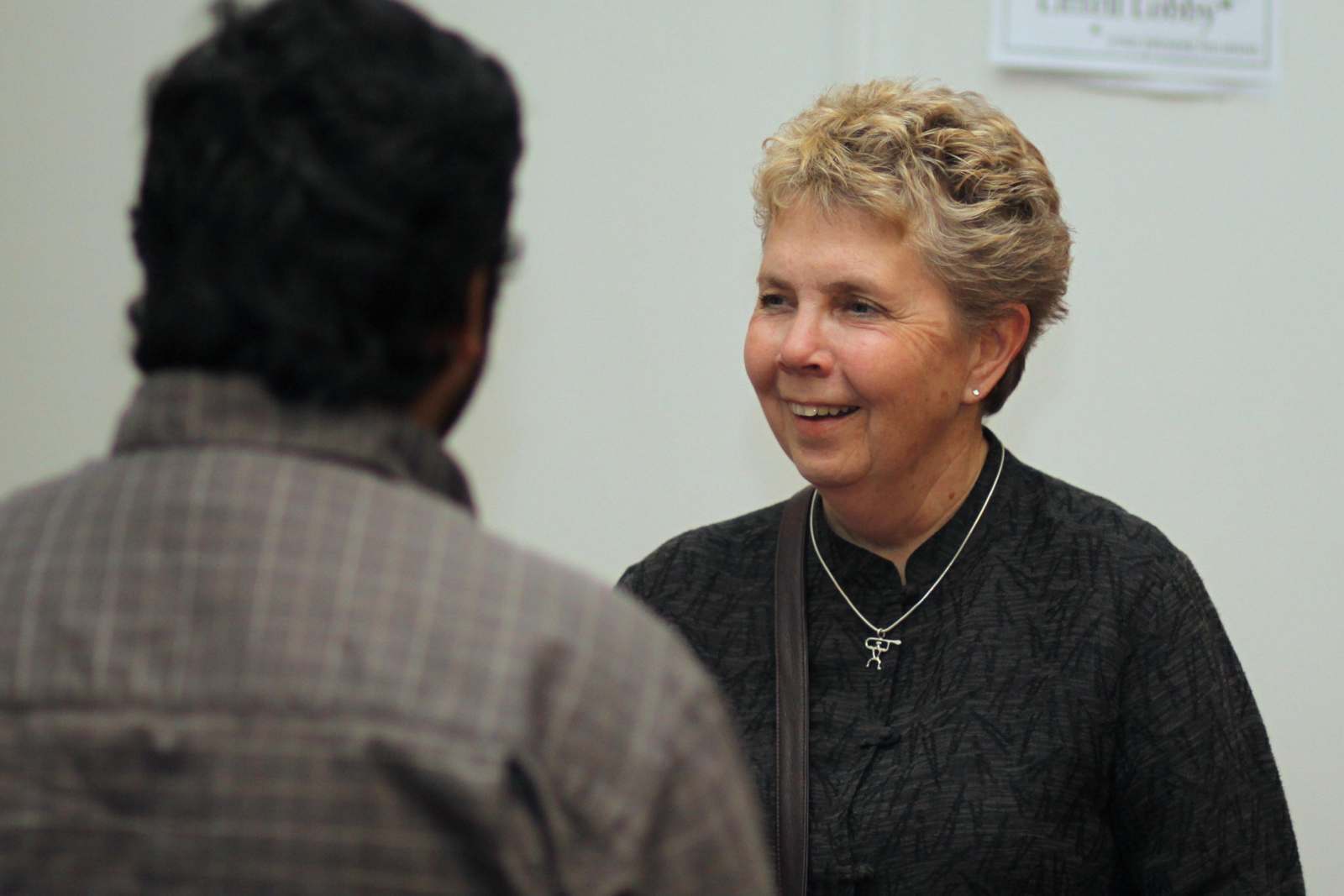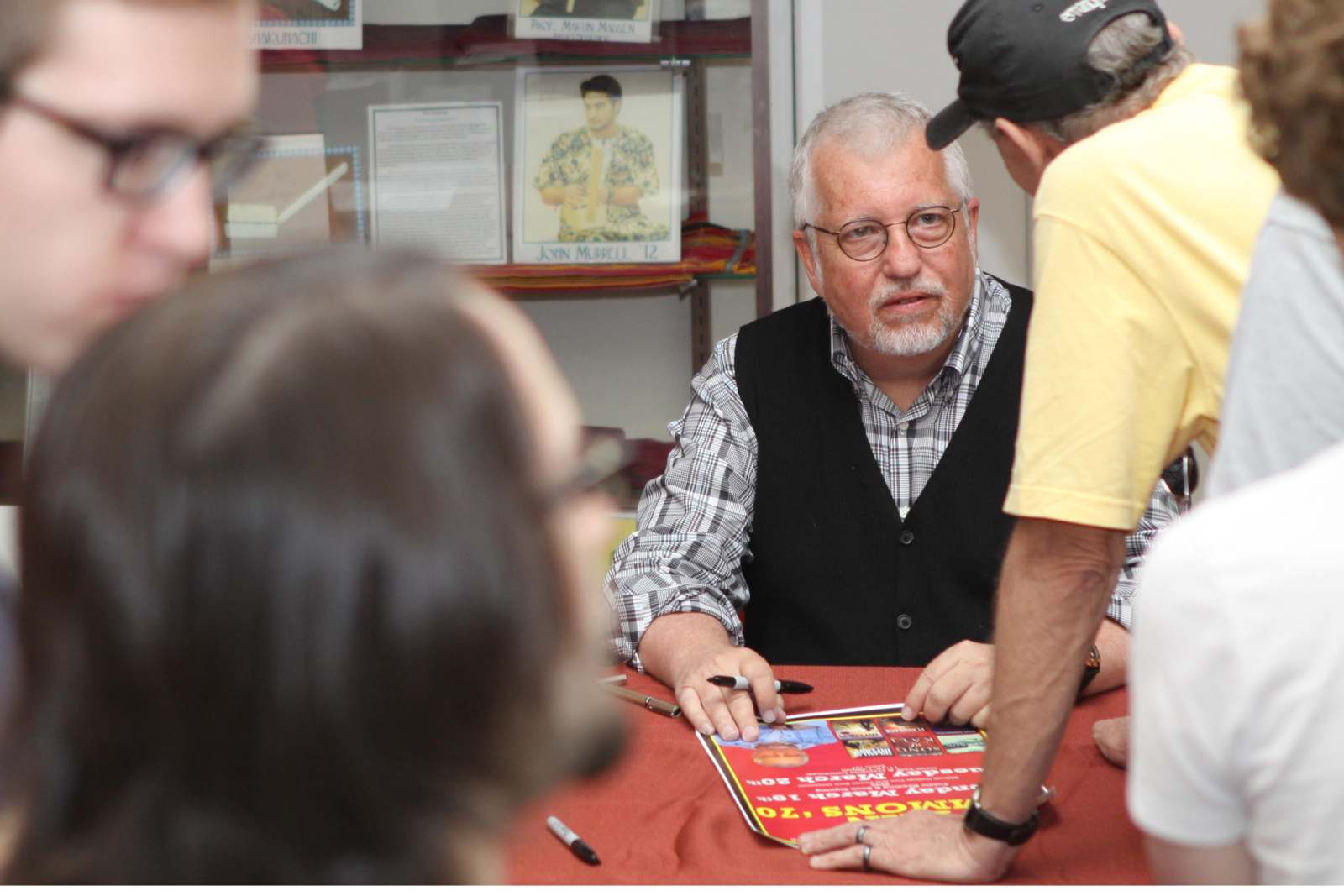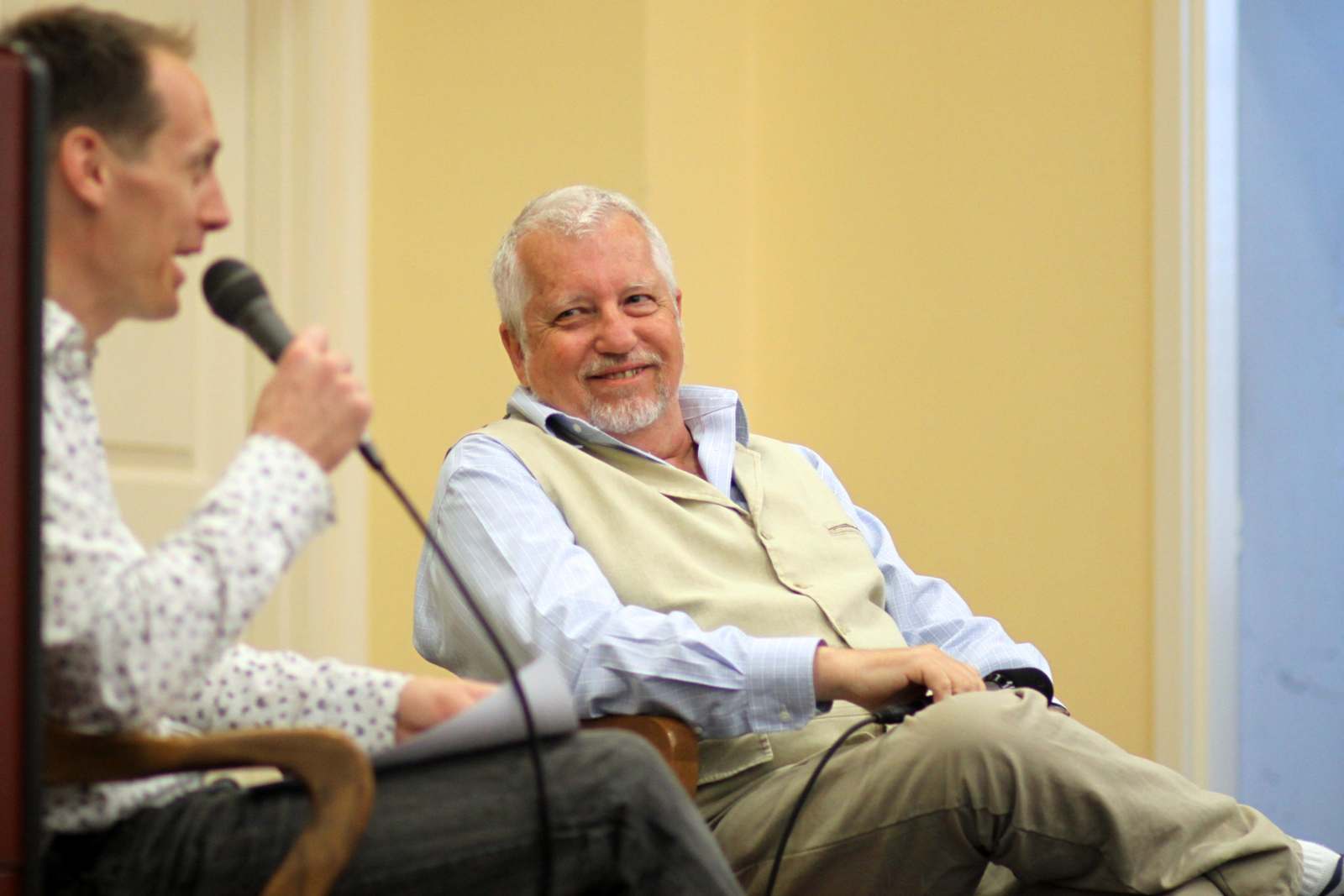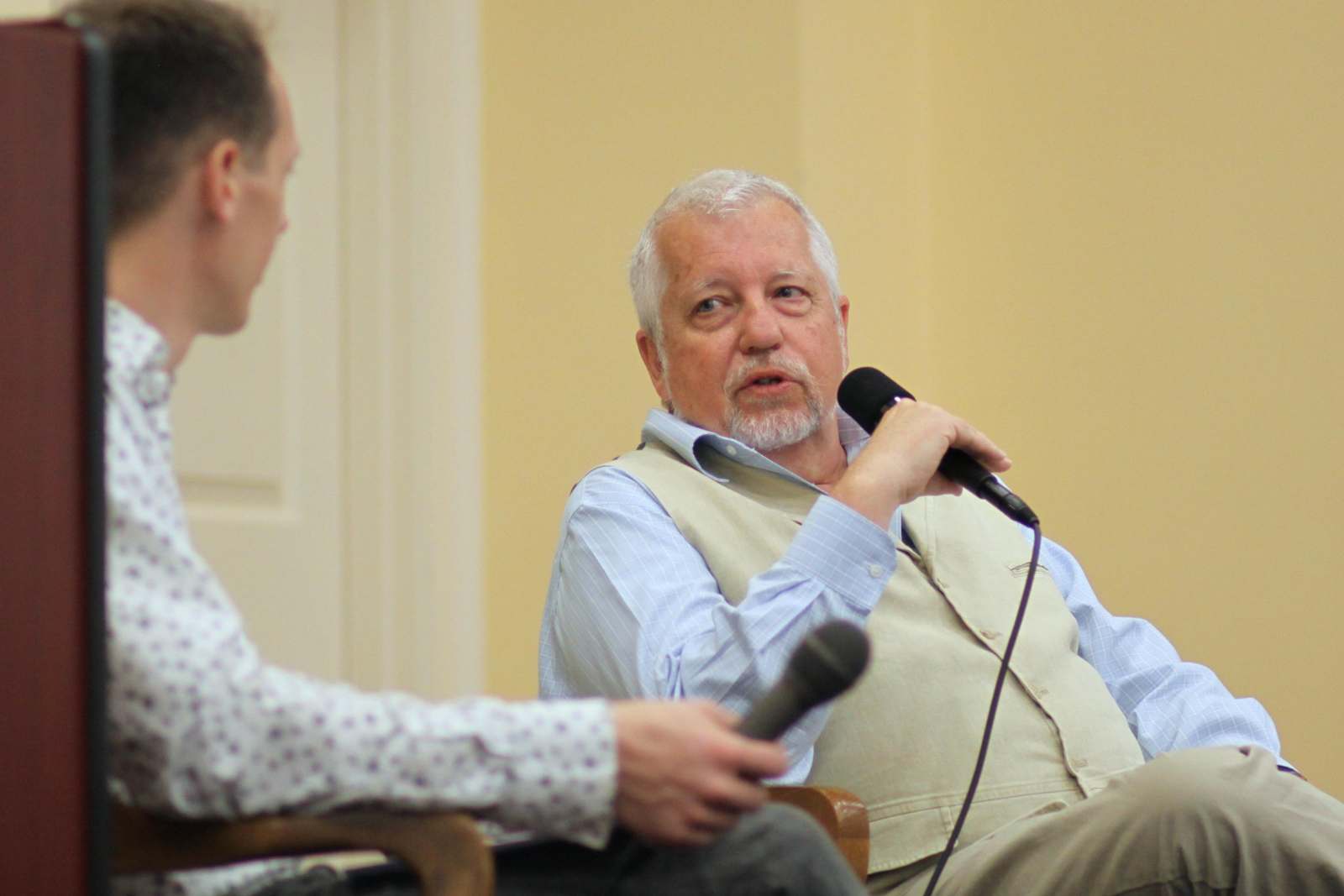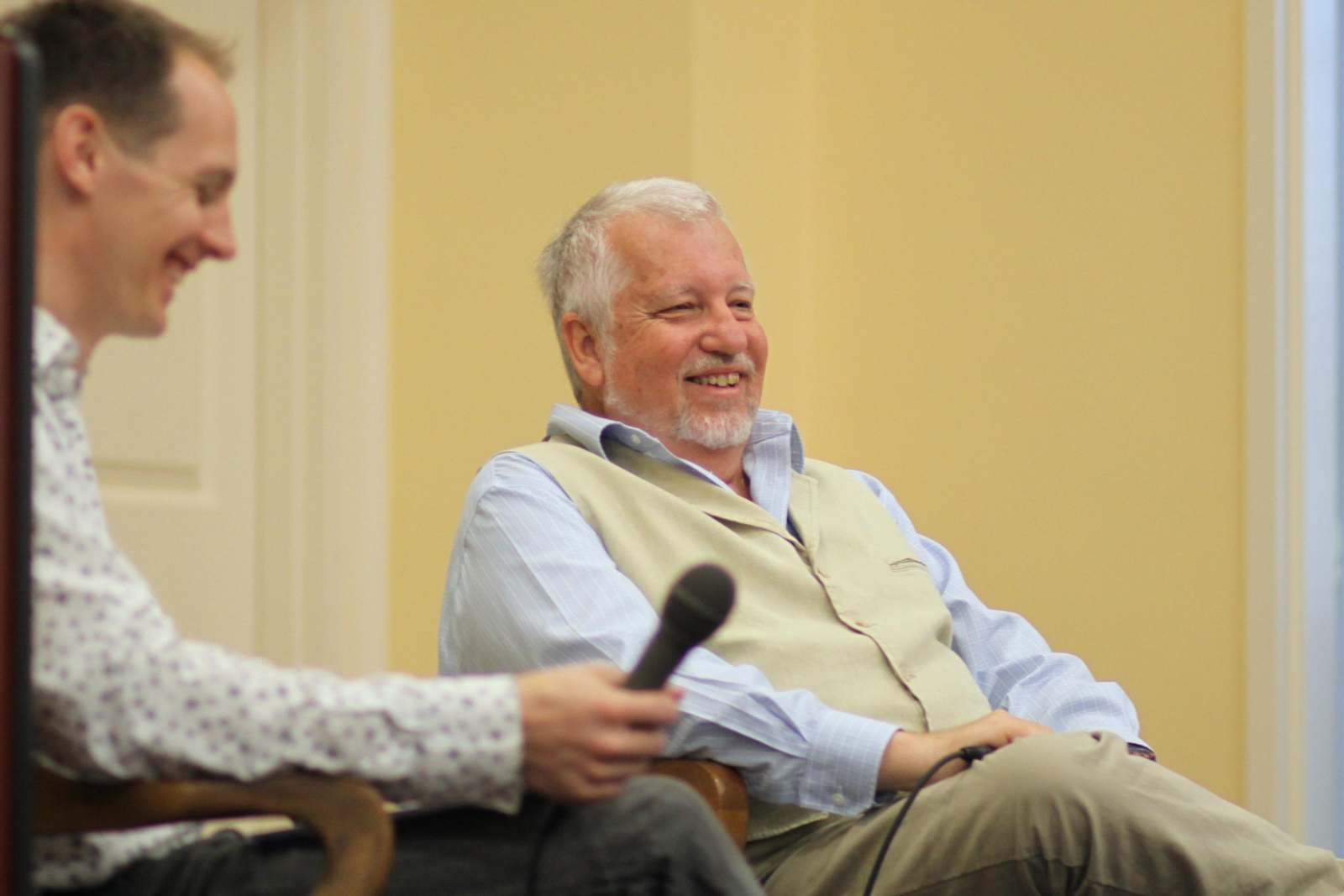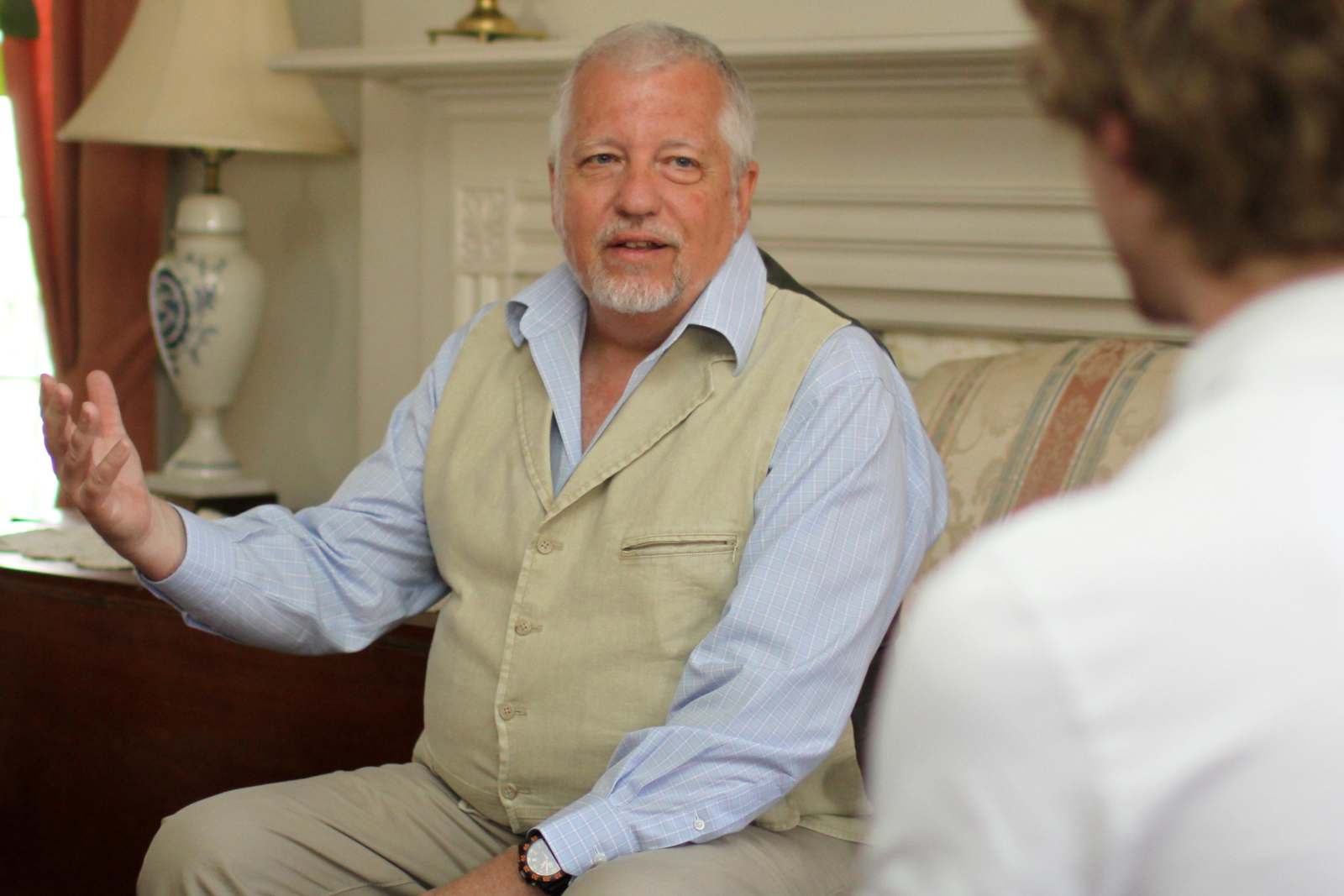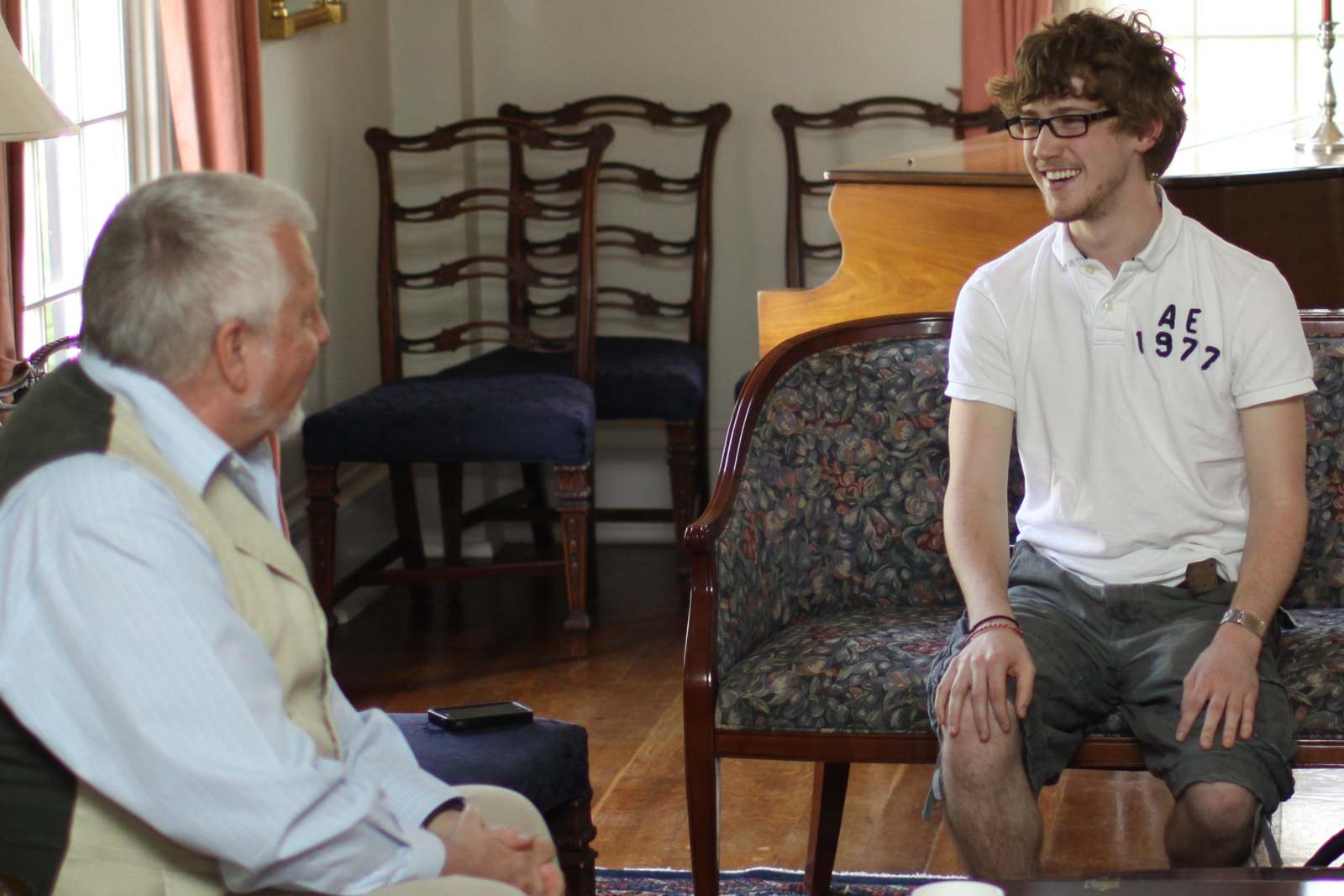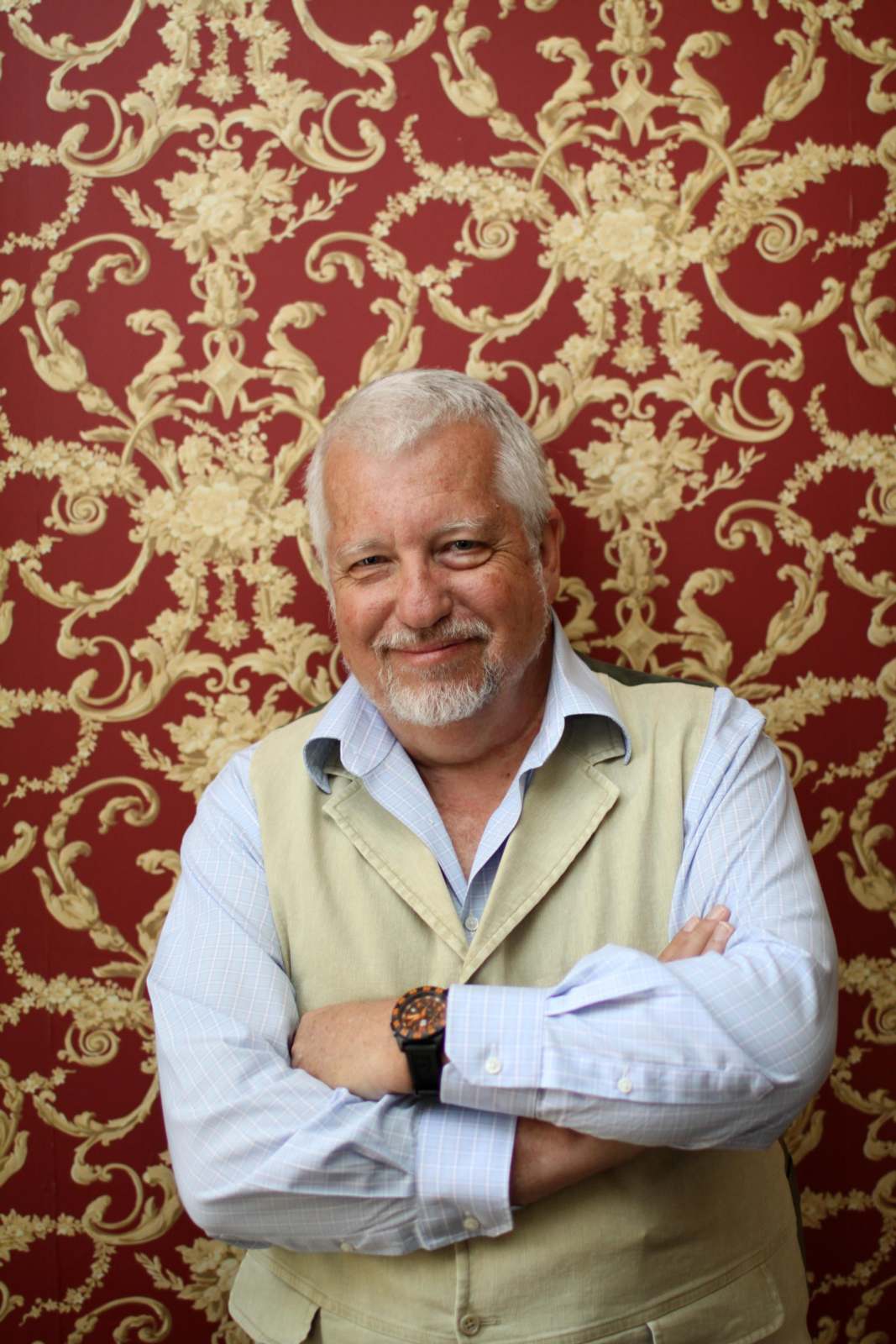Dan Simmons ’70 at Wabash
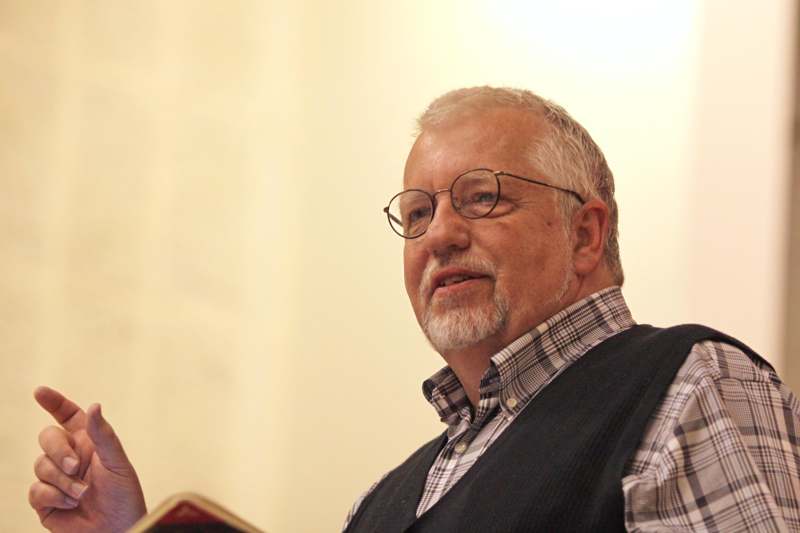
Simmons talks about his student days at Wabash and the support Dean Norman Moore gave him at one of the most difficult moments of his life. Simmons said: When I was younger I determined I would never be loyal to any organization or institution. That exception to that is Wabash College, which is the one place I love and will love for the rest of my life.

Simmons signs books in the Salter Lobby following his reading. On the motivation for his writing the book Drood, which portrays Charles Dickens' final days, Simmons said: I had a rapprochement with Dickens, who I hated for years, and I decided, if I’m going to like him, I better learn about him, I’ll write a novel about him.
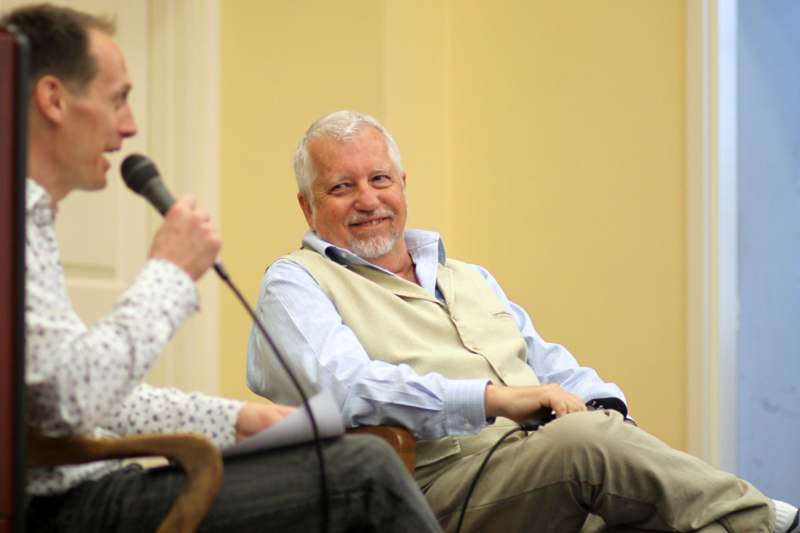
Professor Freeze interviews Simmons during Tuesday's craft talk. Simmons said: One of the great differences between someone who can write a good tale that may last a while and an amateur, or what amateurs don’t quite understand, is something [Game of Thrones author] George R. R. Martin, who is a chess master, pointed out. When they began to program computers to play chess, they learned something important about the human mind. Chess masters aren’t like the IBM chess programs—trying to crunch two million possibilities and prioritize the top four. A chessmaster only sees the best three or four best moves, so has a very small set of choices, and that actually begins to happen when you’re a writer. I’m playing a movie in my head, and after awhile I don’t go down too many false avenues.
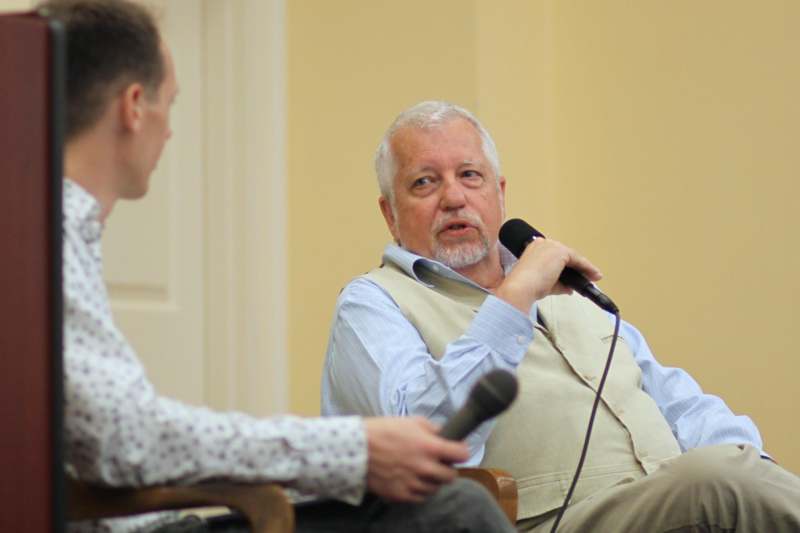
Simmons said: Of course, the most important thing is to get it into words. if you’re a visual artist, you can sculpt, paint, weld iron—maybe 100 different media you can use. But as a writer you only have one medium—one, which is language, words. That’s where much of the learning is for a young writer, the nuts and bolts, every word and sentence.
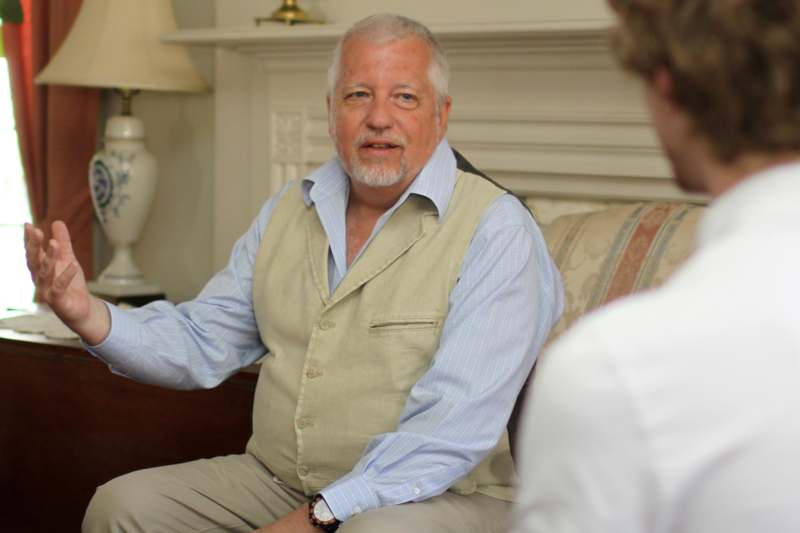
Simmons talks with The Bachelor's Taylor Kenyon ’13. Simmons was a teacher for 18 years before becoming a full-time writer. Simmons said: The most creative thing I ever did was creating APEX (a district-wide program for smart kids) It was the most creative thing I’ve done, more so than any book I’ve written.



